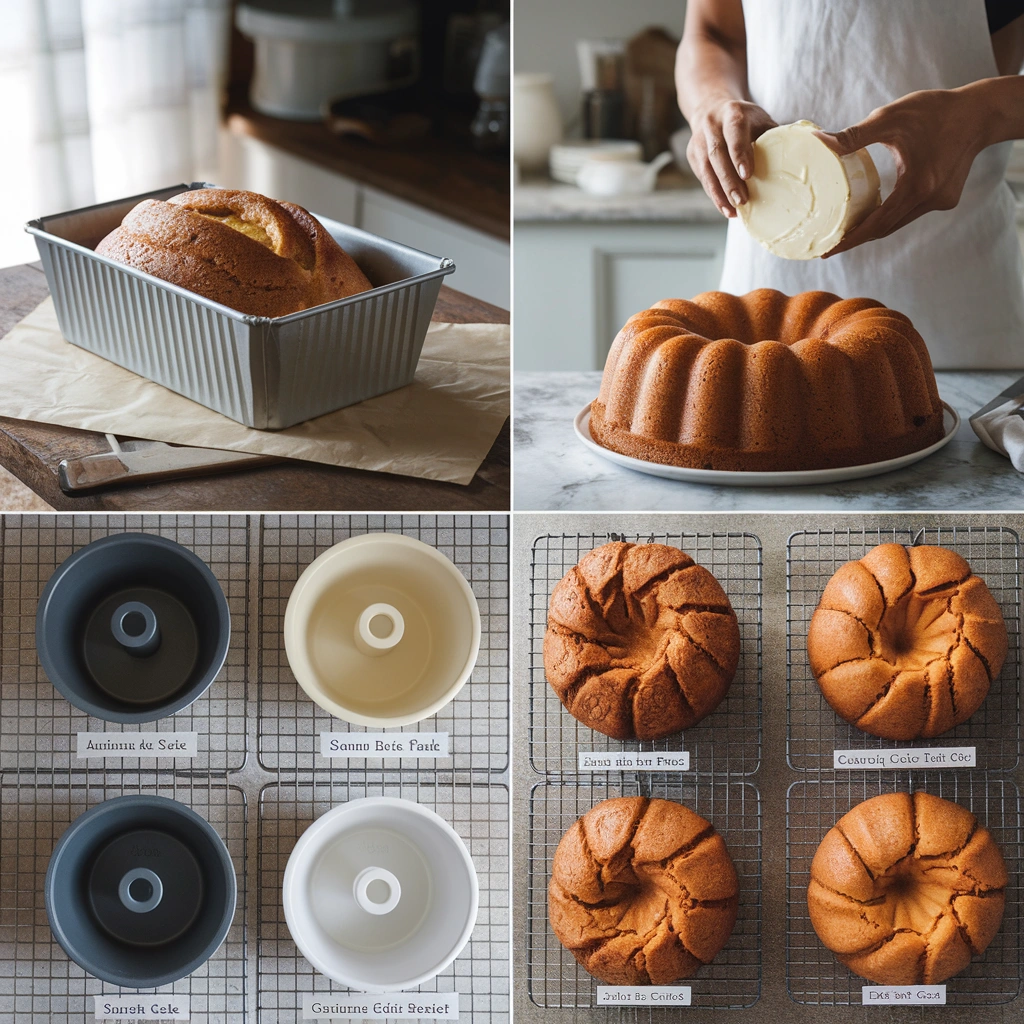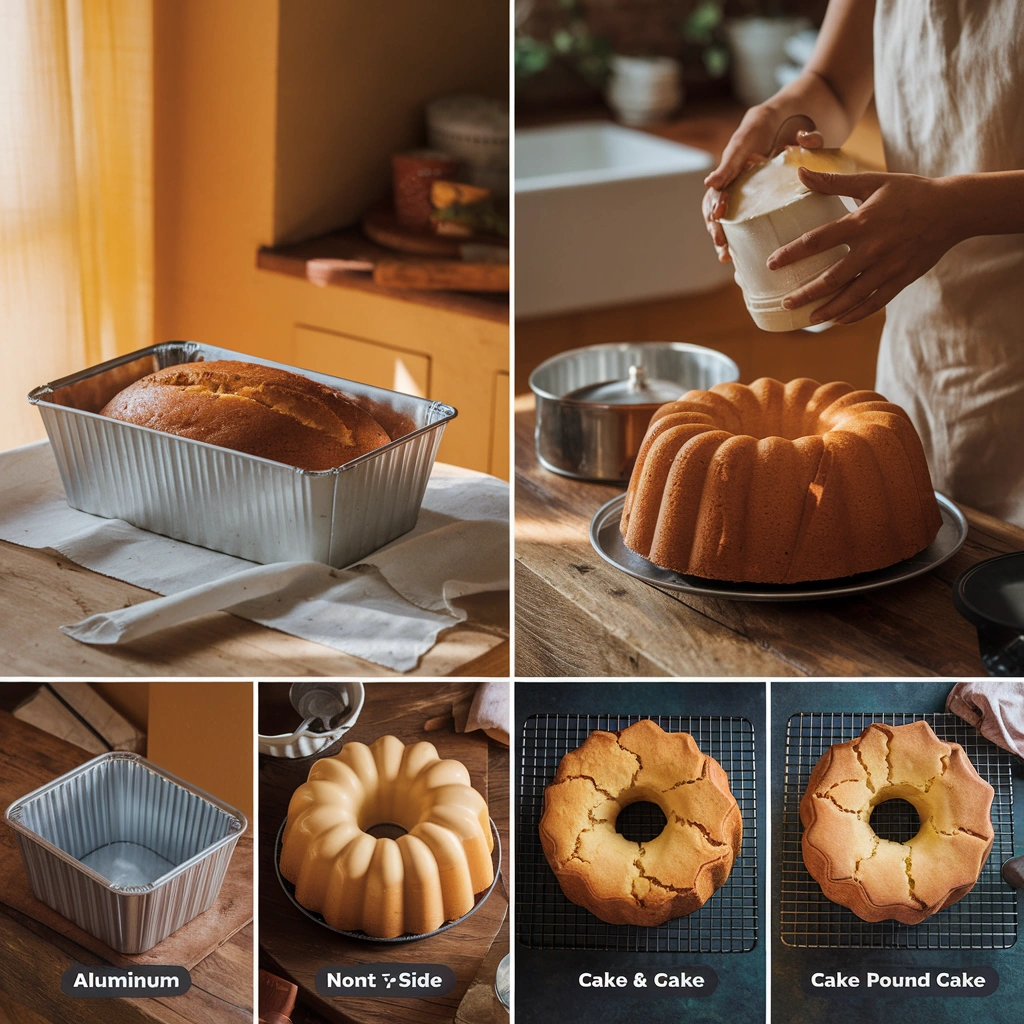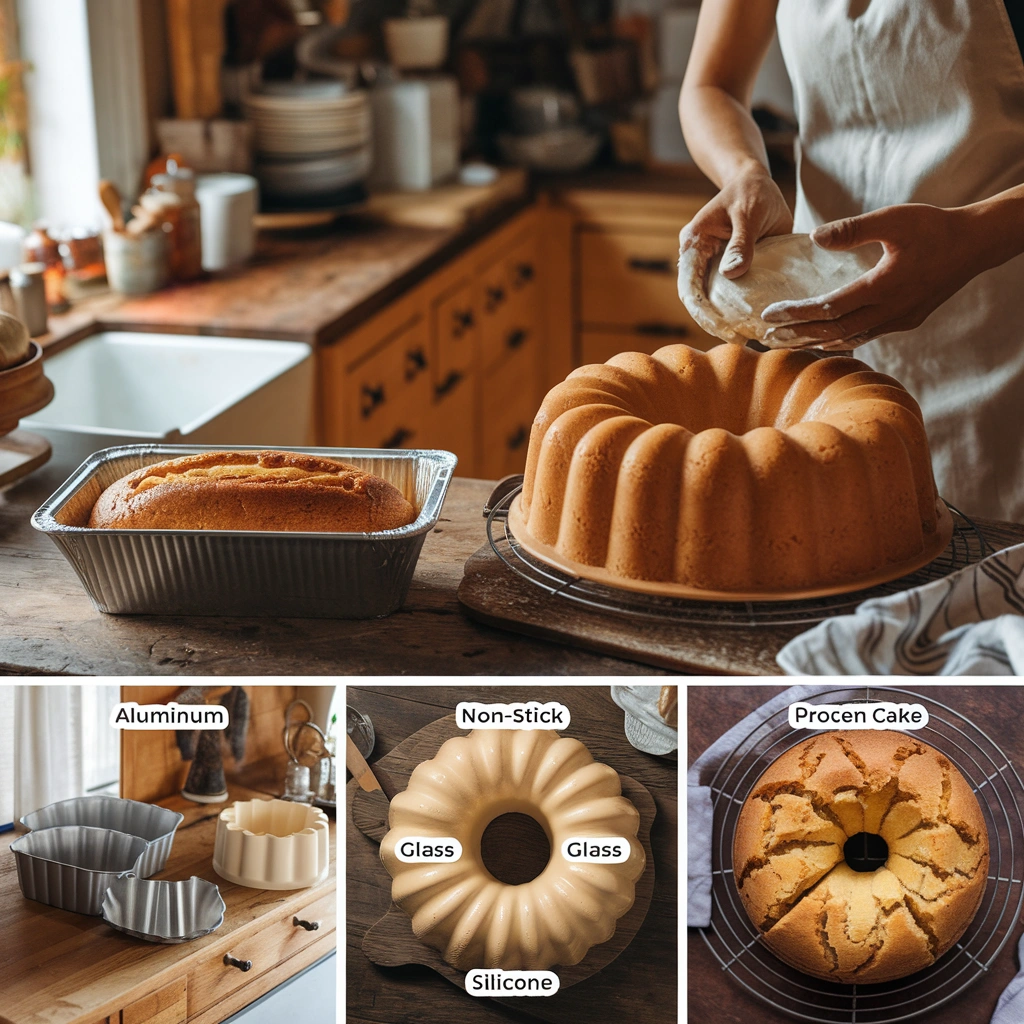The secret to baking a perfect pound cake isn’t just in the recipe—it starts with choosing the right pan! The material, size, and shape of your cake pan can make or break your bake, affecting texture, even browning, and easy release. Without the proper pan, you might end up with a dense, dry, or unevenly baked cake.
If you’ve ever struggled with pound cakes that stick to the pan or bake unevenly, check out this detailed guide on the perfect pound cake pan to learn the best options for flawless results.
In this post, we’ll explore the best cake pans for pound cakes, how to prep them for a smooth release, and essential baking techniques for an even, golden-brown crust. Plus, for more insights on professional baking, check out this expert guide on choosing the best bakeware materials from Serious Eats.
Ready to level up your pound cake baking? Let’s get started! 🍰✨
Best Pound Cake Pan: How to Choose the Right One
The right pan is the foundation of a perfectly baked pound cake. Using the wrong type or size can result in underbaking, excessive browning, or a cake that sticks to the pan. Understanding the differences between various materials and shapes will help you achieve consistent results every time.
Aluminum, Non-Stick, or Silicone: Which One is Best?
The material of your pan affects how your pound cake bakes. Aluminum pans are highly recommended because they provide even heat distribution, preventing overbaked edges and undercooked centers. Non-stick pans are convenient for easy release, but darker coatings absorb more heat, which can lead to excessive browning. If using non-stick, opt for a light-colored pan to ensure a balanced bake. Silicone pans, while flexible, do not conduct heat as efficiently, which may result in a softer, less structured crust. For best results, aluminum or light-colored non-stick pans are the top choices.
Best Pound Cake Pan for Loaf vs. Bundt Cakes
The shape of your pan directly impacts baking time and cake texture. A Bundt pan, with its center tube, allows heat to circulate evenly, ensuring the cake bakes uniformly without leaving raw batter in the middle. A loaf pan, on the other hand, is better suited for a denser pound cake but requires careful monitoring to prevent overbaking. If transitioning from a loaf pan to a Bundt pan, reduce the baking time slightly, as the shape promotes faster and more even heat distribution.
Choosing the Right Pan Size for Perfect Baking
A common mistake in pound cake baking is using a pan that is too small or too large. If the pan is too small, the batter will overflow, creating a mess and affecting the cake’s texture. If it’s too large, the cake may not rise properly, resulting in a flatter bake. A 9×5-inch loaf pan typically holds 8 cups of batter, while a 10- to 12-cup Bundt pan is better for larger cakes. Always leave at least 1 inch of space at the top to allow the batter to rise evenly without spilling over.
Prepping Your Pan for a Flawless Bake

Proper preparation of your pound cake pan ensures an easy release and prevents sticking, cracks, or uneven baking. Even the best-quality pans require a well-executed prep process for the best results.
Greasing Your Best Pound Cake Pan for Easy Release
A well-greased pan is essential for an effortless cake release. While butter is a popular choice, it can sometimes burn, leading to sticking. Instead, use a combination of butter and flour or baking spray with flour for better results. If using a Bundt pan, ensure that every crevice is thoroughly coated to prevent the cake from breaking upon release. Avoid using too much oil, as it can create a sticky residue rather than helping the cake release smoothly.
Using Parchment Paper for Easy Cake Removal
For loaf-style pound cakes, lining the pan with parchment paper is a foolproof way to prevent sticking. Cut a strip that extends beyond the edges of the pan to create “handles” for lifting the cake out effortlessly. This method is particularly helpful for delicate pound cakes with a softer crumb. For Bundt pans, parchment paper is not practical, so thorough greasing and flouring are essential.
Preventing Uneven Baking and Hot Spots
Ovens often have temperature inconsistencies, leading to uneven baking. To ensure that your pound cake bakes evenly, place the pan in the center rack of the oven for balanced heat distribution. Using an oven thermometer helps detect temperature fluctuations, which are common in older ovens. If you notice that one side of your cake browns faster than the other, rotate the pan halfway through baking. This simple step can prevent overbaked edges and undercooked centers.
Expert Baking Techniques for Even Texture and Golden Crust

The baking process is just as important as the ingredients and pan choice. Temperature control, timing, and proper handling play a crucial role in achieving the perfect pound cake.
Setting the Right Oven Temperature
Baking pound cake at the correct temperature is key to getting a moist and evenly baked texture. A temperature of 325°F (163°C) is ideal, as higher temperatures can lead to cracked tops and dry interiors. If using a dark-coated pan, consider lowering the temperature by 25°F to prevent overbrowning. Always preheat your oven fully before placing the cake inside to ensure even heat distribution from the start.
How to Prevent Dry, Cracked, or Sinking Cakes
A dry or cracked pound cake is often the result of overbaking, incorrect ingredient ratios, or excessive mixing. Overmixing the batter develops too much gluten, leading to a tough texture. On the other hand, undermixing can cause the cake to be dense or unevenly risen. Use the creaming method, where butter and sugar are beaten until light and fluffy, to create an airy, well-balanced batter. To prevent cracking, avoid overfilling the pan and ensure that the oven temperature remains stable throughout the bake.
Cooling and Unmolding the Cake Properly
Letting your cake cool for the right amount of time is crucial for maintaining its structure. Cooling it in the pan for too long can trap steam, leading to a soggy bottom, while removing it too soon may cause it to break. The best practice is to let the cake cool in the pan for 10-15 minutes before transferring it to a wire rack. If using a Bundt pan and the cake is not releasing, gently tap the pan on the counter and use a warm towel over the pan to help loosen it.
Common Cake Pan Problems & How to Fix Them
Even with the best techniques, baking mishaps can still occur. Knowing how to troubleshoot common pound cake pan issues will save your cake from failure.
Cake Sticking to the Pan? Here’s How to Fix It!
If your cake refuses to come out of the pan, don’t force it. First, run a plastic knife along the edges to loosen it. If that doesn’t work, place a warm, damp towel over the pan for a few minutes to encourage release. In the future, make sure to grease and flour the pan properly before pouring in the batter to prevent sticking issues altogether.
Why Your Cake Is Browning Unevenly or Has a Cracked Top
Uneven browning or cracks on the surface of your cake often indicate an oven that is too hot or improper batter distribution. To fix this, use an oven thermometer to confirm the correct baking temperature. If your cake frequently develops cracks, try reducing the oven temperature slightly and placing a baking strip around the pan to regulate heat exposure.
Avoid Mistakes with the Best Pound Cake Pan for Moist Cakes
A dense or dry cake can be caused by too much flour, overmixing, or overbaking. Always measure ingredients accurately using a kitchen scale for consistency. Additionally, check the cake’s doneness by inserting a toothpick—if it comes out with a few moist crumbs, the cake is ready. If the cake turns out dry, try brushing it with a simple syrup after baking to add moisture without altering the flavor.
Conclusion
A perfectly baked pound cake starts with the right pan, proper preparation, and expert baking techniques. By choosing the correct material, size, and shape, ensuring even heat distribution, and mastering pan greasing and cooling methods, you can achieve consistent, flawless pound cakes every time. Apply these tips to your next bake, and enjoy a soft, moist cake with a perfect golden crust.
For more expert baking insights, check out this comprehensive guide on bakeware materials and start baking like a pro!

